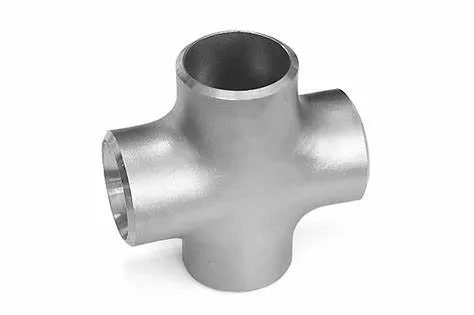-
Cangzhou Yulong Steel Co., Ltd.
-
Phone:
+86 13303177267 -
Email:
admin@ylsteelfittings.com
- English
- Arabic
- Italian
- Spanish
- Portuguese
- German
- kazakh
- Persian
- Greek
- French
- Russian
- Polish
- Thai
- Indonesian
- Vietnamese
- Zulu
- Korean
- Uzbek
- Hindi
- Serbian
- Malay
- Ukrainian
- Gujarati
- Haitian Creole
- hausa
- hawaiian
- Hebrew
- Miao
- Hungarian
- Icelandic
- igbo
- irish
- Japanese
- Javanese
- Kannada
- Khmer
- Rwandese
- Afrikaans
- Albanian
- Amharic
- Armenian
- Azerbaijani
- Basque
- Belarusian
- Bengali
- Bosnian
- Bulgarian
- Catalan
- Cebuano
- China
- China (Taiwan)
- Corsican
- Croatian
- Czech
- Danish
- Esperanto
- Estonian
- Finnish
- Frisian
- Galician
- Georgian
- Kurdish
- Kyrgyz
- Lao
- Latin
- Latvian
- Lithuanian
- Luxembourgish
- Macedonian
- Malgashi
- Malayalam
- Maltese
- Maori
- Marathi
- Mongolian
- Myanmar
- Nepali
- Norwegian
- Norwegian
- Occitan
- Pashto
- Dutch
- Punjabi
- Romanian
- Samoan
- Scottish Gaelic
- Sesotho
- Shona
- Sindhi
- Sinhala
- Slovak
- Slovenian
- Somali
- Sundanese
- Swahili
- Swedish
- Tagalog
- Tajik
- Tamil
- Tatar
- Telugu
- Turkish
- Turkmen
- Urdu
- Uighur
- Welsh
- Bantu
- Yiddish
- Yoruba

Dec . 24, 2024 10:45 Back to list
Understanding Class 2500 Flange Specifications and Applications in Industrial Settings
Understanding Class 2500 Flanges Specifications and Applications
Flanges are mechanical components that form a critical part of piping systems across various industries. They provide a method for joining two discrete sections of pipe, thereby creating a secure and leak-proof connection. Among the various flange classifications available, Class 2500 flanges hold a significant position due to their robust design and high-pressure application capabilities.
What is a Class 2500 Flange?
Class 2500 flanges are designed for use in high-pressure environments, typically rated to handle pressures up to 2500 psi at a temperature of 100°F (38°C). The classification system for flanges is based on the American National Standards Institute (ANSI) and the American Society of Mechanical Engineers (ASME), which assesses flanges based on their pressure-temperature ratings. This classification indicates the capacity of a flange to withstand atmospheric pressure and temperature variations without failing.
Class 2500 flanges are constructed from various materials, including carbon steel, stainless steel, and alloy steel. The choice of material affects the flange's resistance to corrosion, tensile strength, and overall durability, making it ideal for demanding environments like petrochemical plants, power generation facilities, and water treatment plants.
Specifications of Class 2500 Flanges
Typically, Class 2500 flanges can be identified based on several key specifications
1. Material Commonly used materials include A105 for carbon steel and A182 for stainless steel. Each material type offers specific benefits depending on the application, such as resistance to high temperatures or corrosive environments.
2. Dimensions The size of Class 2500 flanges varies, often available in diameters ranging from a few inches to several feet. The thickness of the flange is also crucial, influencing its ability to handle pressure loads.
3. Connection Type Class 2500 flanges can be manufactured with various connection types, including weld neck, slip-on, blind, and threaded flanges. The selection typically depends on the nature of the system and the intended application.
class 2500 flange

4. Standard Compliance Class 2500 flanges are manufactured according to industry standards such as ASME B16.5, which provides guidelines on the dimensions, materials, pressure ratings, and testing methods for flanges.
Applications of Class 2500 Flanges
The significant pressure rating of Class 2500 flanges makes them suitable for various critical applications, including
- Oil and Gas Industry Due to the high pressures involved in extraction and transport, Class 2500 flanges are commonly used in pipelines and refining facilities. They ensure a secure blockage between sections of pipes that transport crude oil and natural gas.
- Chemical Processing In chemical plants, flanges must withstand not only high pressures but also corrosive materials. Class 2500 flanges made from appropriate alloy steels or stainless steel can handle these demands effectively.
- Hydraulic Systems Hydraulic machinery frequently operates under substantial pressure. Class 2500 flanges facilitate safe connections within pipelines, reducing the risk of leaks or burst pipes.
- Power Plants Flanges are essential in steam and water lines within power generation facilities. The high-temperature and high-pressure steam lines often utilize Class 2500 flanges for maximum safety and efficiency.
Conclusion
Class 2500 flanges are vital components in high-pressure piping systems, offering robustness and reliability across diverse industrial applications. Understanding their specifications, including material types, dimensions, and connection varieties, can help engineers and project managers select the appropriate flanges for their specific needs. As industries continue to demand higher safety and efficiency standards, the significance of high-class flanges, particularly Class 2500, remains unquestionable. Investing in quality flanges and proper installation techniques can lead to enhanced system performance and longevity, safeguarding against costly failures and disruptions.
Latest news
-
ANSI 150P SS304 SO FLANGE
NewsFeb.14,2025
-
ASTM A333GR6 STEEL PIPE
NewsJan.20,2025
-
ANSI B16.5 WELDING NECK FLANGE
NewsJan.15,2026
-
ANSI B16.5 SLIP-ON FLANGE
NewsApr.19,2024
-
SABS 1123 FLANGE
NewsJan.15,2025
-
DIN86044 PLATE FLANGE
NewsApr.19,2024
-
DIN2527 BLIND FLANGE
NewsApr.12,2024
-
JIS B2311 Butt-Welding Fittings LR/SR 45°/90° /180°Seamless/Weld
NewsApr.23,2024











